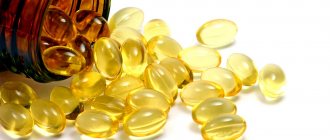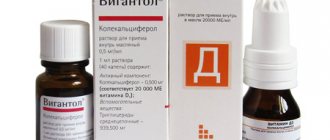To maintain the health of the body, a person needs to replenish the supply of vital macro- and microelements. These include proteins, fats, carbohydrates, as well as vitamins, phytonutrients, etc. The most controversial are Omega-3-6-9. These are varieties of polyunsaturated acids, which some consider extremely useful, while others see them as a danger to their figure and well-being. Let's try to figure it out. Let's find out whether our body really needs fats, why drink Omega-3-6-9.
Why combine omega 3, 6, 9 fatty acids
Omega acids gained popularity after their ability to reduce the incidence of cardiovascular diseases and prolong human life was discovered. Doctors give the main place to three representatives of omega - 3, 6 and 9. Their beneficial properties are as follows:
- prevention of atherosclerosis;
- reducing the likelihood of thrombosis and blood thinning;
- reduction of inflammatory processes and acceleration of tissue regeneration;
- strengthening cell membranes, increasing cell resistance to adverse factors;
- reducing hyperglycemia, increasing insulin sensitivity;
- increasing the activity of antioxidant enzymes, slowing down aging;
- increasing skin elasticity, strengthening hair and nails;
- improving the functioning of the nervous system and brain.
Solgar, Omega 3-6-9, 1300 mg, 120 Softgels
RUB 2,165
More details
Not only the action of each group of acids is important, but also their combination with each other. The optimal ratio of omega-3-6 is 1:5. However, most people eat in such a way that this ratio reaches 1:25, which is why health problems arise. The wrong amount of omega acids can, on the contrary, lead to increased cholesterol levels and the development of inflammatory reactions.
Taking Omega 3, 6, 9 is also necessary because these compounds are essential for the human body and must come from outside (with food or dietary supplements).
Complex supplements that contain multiple fatty acids allow you to get them in the right ratio and maximize the effectiveness of each ingredient. It is the balance of different omega groups that is necessary to maintain the health of the whole body.
Biological significance
Omega-type triglycerides are essential nutrients for the human body that have anti-atherosclerotic, anti-inflammatory, wound-healing, sedative, angioprotective and anti-lipid effects.
Beneficial features:
- activate metabolic processes in the cell;
- improve cognitive functions of the brain (memory, attention);
- strengthen bone tissue;
- alleviate the symptoms of premenstrual syndrome (eliminate sweating, pain, irritability);
- accelerate detoxification processes in the liver;
- normalize the psycho-emotional state;
- strengthen the immune system;
- accelerate the process of losing weight (due to normalization of lipid metabolism);
- dissolve “bad” cholesterol (together with omega-3);
- eliminate dryness, peeling and itching of the skin;
- normalize the functioning of the reproductive organs (due to the activation of sex hormones);
- stop the destruction of nerve fibers;
- prevent the spread of inflammation, reduce the likelihood of their development (subject to consumption of omega-3);
- prevent the risk of developing cancer;
- eliminate dry eyes;
- regulate the synthesis of hormones, enzymes, and proteins;
- accelerate the growth of lean muscle muscles.
What is omega-6 compound good for?
Fats of this type are used in medicine to treat cardiovascular pathologies, nervous disorders, autoimmune diseases, and hormonal dysfunctions.
Indications for use of omega-6:
- multiple sclerosis;
- depressive states;
- diabetes;
- rheumatoid arthritis;
- endometriosis;
- fibrous mastopathy;
- allergic reactions;
- infertility;
- vascular atherosclerosis;
- prostatitis;
- alcoholism;
- thrombophlebitis;
- arterial hypertension;
- bronchial asthma;
- low levels of sex hormones.
In addition, essential fats are used to treat malignant neoplasms in the colon, breast, and skin.
Contraindications
Preparations and dietary supplements containing the omega-3 complex have virtually no contraindications. Official instructions do not recommend taking vitamins for the following conditions:
- pregnancy;
- lactation period;
- individual intolerance;
- simultaneous intake of other products containing vitamins and omega representatives.
Relative contraindications that require additional consultation with a doctor are the following conditions:
- stones in the kidneys or urinary tract;
- endocrine disorders, especially in the thyroid gland;
- problems with blood clotting.
Side effects and individual intolerance
Side effects can occur with long-term use of vitamins, with an overdose, or with individual intolerance. Possible side effects to consider are:
- Allergic reactions, abdominal pain, increased concomitant diseases, if before starting therapy the patient was not familiar with the contraindications of Omega 3, 6, 9.
- It is possible to gain excess weight due to the high calorie content of products containing omega.
When medications are used correctly, there are no side effects. You can also reduce the likelihood of unexpected reactions by using the correct dosages of capsules and following the recommended duration of treatment.
Individual intolerance can occur to both the main active ingredients and excipients. In such cases, unexpected reactions occur within 1-2 hours after swallowing the capsule. Signs of such conditions are abdominal pain, skin itching and other symptoms that were not previously present in the patient.
Food sources
Linoleic acid is found in plant oils.
Table “Which foods contain omega-6 triglycerides”
| Source containing essential lipid | Amount of linoleic acid in 100 grams of product, grams |
| Grape seed oil | 72 |
| Poppy seed oil | 69 |
| Sunflower oil | 66 |
| Wheat germ oil | 57 |
| Corn oil | 54 |
| Walnut oil | 53 |
| Cottonseed oil | 52 |
| Pumpkin oil | 51 |
| Soybean oil | 50 |
| Sesame oil | 41 |
| Peanut butter | 35 |
| Pine nuts | 33 |
| Sunflower seeds | 32 |
| poppy seed | 28 – 30 |
| Almond oil | 27 |
| Sesame seed | 21 – 26 |
| Brazilian nut | 20 – 25 |
| Pumpkin seeds | 19 |
| Mustard oil | 17 |
| Peanut | 15 |
| Rapeseed oil | 16 |
| Linseed oil | 14 |
| Pistachios | 13 |
| Olive oil | 12 |
| Walnuts | 11 |
| Palm oil | 9 |
| Flax-seed | 6 |
| Black chia seeds | 5,5 |
| Coconut oil | 3 |
| Avocado | 1,7-2 |
| Brown unpolished rice | 0,9-1 |
In addition, omega-6 fats are found in small quantities (less than 1 gram per 100 grams of product) in almost all vegetables, fruits, berries, herbs, cereals, dried fruits, and mushrooms.
Directions for use and dosage
Nowadays Omega acid preparations are produced mainly in capsules for oral administration. High-quality manufacturers make them with a neutral taste and no characteristic odor, and do not add artificial preservatives or colorings. The unpleasant aroma of fish oil, which adults associate with fatty acids, is absolutely not noticeable in modern products. Capsules are taken orally during or after meals, when fatty acids can be fully absorbed in the intestines.
Depending on the manufacturer and the product itself, the qualitative composition of acids and their concentrations may differ, however, all products try to compensate for the Omega 3 deficiency in the human body.
The daily intake of omega-3 acids is about 3000 mg, however, this amount also includes compounds that a person receives from food.
The preventative daily dose for adults is 1 g. Depending on the purpose of using vitamins, the daily amount and duration of treatment can be adjusted by the doctor. The recommended daily allowance for women is 2g. This amount of fatty acids per day will help maintain external and internal health.
It is better to read the official instructions for exactly how to take omega 3, 6, 9, since capsules can be taken once or twice a day. The doctor decides whether the medications need to be taken for a long time. Standard recommendations are 30 days of treatment, followed by a month's break. After this, a repeat course is possible.
Watch the video instructions for using Omega fatty acids:
Omega 3 6 9 instructions for use
What is vitamin D and its role in the body
Vitamin D is one of the most important biologically active substances synthesized in the body, or more precisely in the skin, under the influence of sunlight. Today, most city residents spend very little time in the fresh air, much less allow themselves to bask in the gentle rays of the sun. Therefore, if previously a deficiency of this vitamin was mainly found in children, now the vast majority of adults are in a similar state. This raises a very pressing question about the need for additional introduction into the diet of foods and preparations containing its predecessors.
Previously, a disease such as rickets was very common in pediatrics, the main cause of which was a lack of vitamin D. But the use of fish oil containing vitamin D precursors solved the problem.
Residents of northern regions, where there is little sun, especially suffer from a lack of vitamin D. Therefore, for them additional sources of this compound are:
- milk and fermented milk products;
- egg yolks;
- seafood.
However, getting the right amount of vitamin D from food is extremely difficult. Therefore, today special preparations and dietary supplements (dietary supplements) are used to compensate for its deficiency.
Providing the body with the required amount of vitamin D every day is very important for maintaining health and normal well-being. After all, it takes part in a lot of different biochemical processes, and also has a positive effect on metabolism, the body’s ability to resist all kinds of viral infections, as well as oxidative stress. Moreover, by maintaining normal vitamin D levels, the risk of cancer and fetal malformations during pregnancy is reduced.
Low levels of this compound in adults contribute to the development of osteoporosis, i.e. a decrease in bone density and an increase in its porosity. As a result, the risk of fractures, including vertebral compression fractures, increases sharply, even with a minor impact or simply a sudden movement. That is why vitamin D is very often used in the treatment of diseases of the spine and the musculoskeletal system in general.
In addition, with vitamin D deficiency in the body, the following are observed:
- sleep disorders;
- worsening mood, depression, depressive states;
- tendency to gain excess weight;
- cognitive disorders (deterioration of memory, attention, ability to concentrate);
- frequent colds;
- premature aging;
- increased risk of developing diabetes;
- accelerated wear of joints, which leads to the development of arthrosis, osteochondrosis and their complications in the form of protrusions, intervertebral hernias, etc.
Therefore, it is imperative to maintain normal vitamin D levels. If this cannot be achieved naturally, i.e. through exposure to sunlight, then special dietary supplements should be used. But recent research has yielded stunning results that show that vitamin D is, in fact, a steroid hormone. Therefore, today it is possible to start taking drugs based on it only after determining its concentration in the blood and obtaining low values indicating a deficiency.
Features of taking vitamin D
There are 2 types of vitamin D preparations: based on cholecalciferol and calcitriol. In the first, the active ingredient is an inactive form of vitamin D, which is extremely difficult to achieve an overdose of when taken. This allows it to be used to gently replenish vitamin D deficiency. Calcitriol is an active form of vitamin D, the use of which is indicated only when its level in the blood is critically low. Preparations with this active substance are prescribed exclusively by a doctor and require regular monitoring of treatment results.
But to normalize the level of vitamin D in the body and improve well-being, it is not enough to simply take medications and dietary supplements containing it. This must be done correctly, since the precursors of this hormone that enter the body with food are poorly absorbed in the gastrointestinal tract when:
- diseases of the gallbladder that provoke disturbances in the outflow of bile, including cholecystitis and bends of the bile duct, since the absorption of vitamin D requires the direct participation of bile;
- inflammatory bowel diseases and dysbiosis;
- obesity, since the lion's share of vitamin D entering the body accumulates in adipose tissue;
- genetic disorders leading to a decrease in the number of vitamin D-sensitive receptors.
On average, an adult needs about 600-1000 IU of vitamin D per day to cover all the body's needs. This amount is contained in approximately 2-4 teaspoons of fish oil. If you significantly exceed this norm, it is possible:
- decreased appetite;
- increased irritability;
- pain in muscles and joints;
- rigidity of the walls of blood vessels;
- increased heart rate;
- nausea and vomiting.






